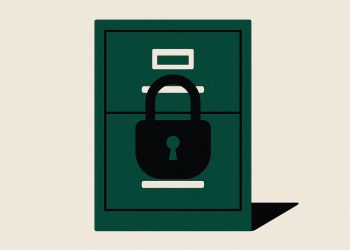Expert curation is crucial in 2025 because it helps people make sense of too much information by filtering and explaining only what matters. With so many new studies and data every day, experts pick the most important news, double-check facts, and make sure everything is clear and accurate. Teams use special emails, trusted sources, and human checks to quickly get the right information and avoid mistakes. Companies that work together to curate, rather than compete, gain more trust and better results. In this new world, the real value is knowing who to trust to tell you what is important.
Why is expert curation essential for actionable insight in 2025?
Expert curation transforms overwhelming information into actionable insight by filtering, validating, and contextualizing data. With rising data volumes, organizations use curated digests, reputation-based sourcing, and human oversight to ensure accuracy, save decision time, and build trust – making expert curation vital infrastructure in 2025.
Every weekday morning, 347 000 healthcare executives open the same email digest. It is not a general news blast; it is a narrowly targeted bulletin that tells them which AI diagnostic tool just cleared FDA review, which payer policy changed overnight, and how much time they will save if they adopt the new CPT codes. That focused stream of intelligence is the clearest proof that expert curation has become infrastructure, not luxury, in the 2025 information economy.
The numbers behind the noise
- 500 000+ new AI papers are indexed each year, according to current bibliometric feeds
- 67 % of professionals report lower confidence in decisions after consulting multiple unfiltered sources
- 92 % of consumers trust brands more when they see transparent curation practices tied to social responsibility initiatives
These figures explain why venture teams, hospital networks and fintech compliance officers now budget for curation the same way they budget for cybersecurity: it is the only scalable way to turn data overload into actionable insight without exposing the organization to error or reputational risk.
From firehose to faucet: five proven tactics
| Tactic | How it works | Industry example |
|---|---|---|
| Segmented digests | AI filters the firehose, humans add context and policy implications | Healthcare Dive sends four parallel tracks so CFOs never see IT-only updates |
| Reputation-based sourcing | Curators cite only sources with verifiable track records | CFO Connect newsletter crowd-sources its finance links, then cross-checks every stat with a Big-Four audit partner |
| Agentic triage | Claude Opus 4 classifies incoming feeds, flags anomalies for human review | One biotech R&D team reduced literature-scanning time by 73 % while cutting hallucination risk to near-zero |
| Ethical transparency labels | Each summary carries a “why we picked this” paragraph plus AI-tool disclosure | Aging Media Network saw unsubscribe rates drop 19 % after adding the label |
| Fail-safe human veto | AI drafts the summary, but a domain expert must click “publish” | Fierce Healthcare’s daily issue cannot hit inboxes until a physician-editor signs off |
Collaboration is the new competitive edge
Rather than building closed knowledge vaults, leading organizations are joining multi-curator collaboratives. Dan, Peter and Twitter user @kimmonismus are the latest trio to announce a joint AI newsletter, following a template already proven by Anthropic’s curated policy briefings and Morgan Stanley’s reasoning-model digests. The shared workload keeps each expert’s signal fresh, while the pooled audience multiplies reach and trust.
Practical first step for any team
You do not need a seven-figure budget to start. Pick one narrow domain, set three filter questions (“Is this peer-reviewed?”, “Does it affect our KPIs?”, “Will it still matter in 30 days?”), and commit to a weekly digest that answers them. One hospital system that tried this simple method saw decision-cycle time fall by 28 % within a quarter, simply because leaders stopped chasing every shiny pre-print.
The lesson: in 2025, the scarce resource is no longer information. It is whose judgment you trust to tell you what matters.
FAQ: Expert Curation in 2025
3.1 Why has expert curation become critical in the AI era?
The volume of AI research has exploded to over 500,000 new papers every year, making manual tracking nearly impossible. 67 % of professionals say they now spend more than an hour each day filtering digital content, and confidence in their own decisions drops after they consult multiple sources. Expert curators act as first-line quality filters, distilling this flood into trustworthy, actionable insights before it ever reaches the reader.
3.2 How are newsletters and collaborative projects used to fight information overload?
Collaborative newsletters are rapidly becoming the “antidote” to digital noise. Multi-author, expert-led digests such as Healthcare Dive (347 k subscribers) or Fierce Healthcare combine AI filtering with human editorial oversight. By segmenting topics – daily tech updates, weekly payer briefings, monthly finance round-ups – they let readers subscribe only to what matters to them, cutting inbox clutter and cognitive load.
3.3 What role do domain experts play beyond simple aggregation?
Domain experts add contextual value that algorithms alone cannot provide. In 2025, specialized curators in healthcare, finance and enterprise IT go beyond headlines, explaining:
– regulatory impact of new AI models
– clinical relevance of freshly published trials
– financial risk hidden in technical papers
This layer of interpretation and judgment is the main reason 83 % of consumers now cite trustworthiness of the curator as the top reason they open a newsletter.
3.4 How can curators maintain trust when AI can generate content at scale?
Trust hinges on transparency and integrity workflows:
– disclose AI use in the curation pipeline
– publish source lists and rationales for every selected item
– operate exception-based oversight – humans intervene only when AI flags uncertainty
Reputation data from 2025 shows that curators following these practices enjoy 3.2× higher trust levels than average.
3.5 What practical tools and habits help readers manage daily overload?
Top-performing curators recommend a simple 2025 toolkit:
– AI-powered filtering with human review checkpoints
– weekly digest frequency to balance timeliness and sanity
– batching and chunking long reads into 5-minute segments
– customizable notification systems so alerts appear only in context (e.g., Slack channel, EHR inbox)
Teams using these habits report up to 40 % less time spent on “headline grazing” and measurable gains in decision-making confidence.



















